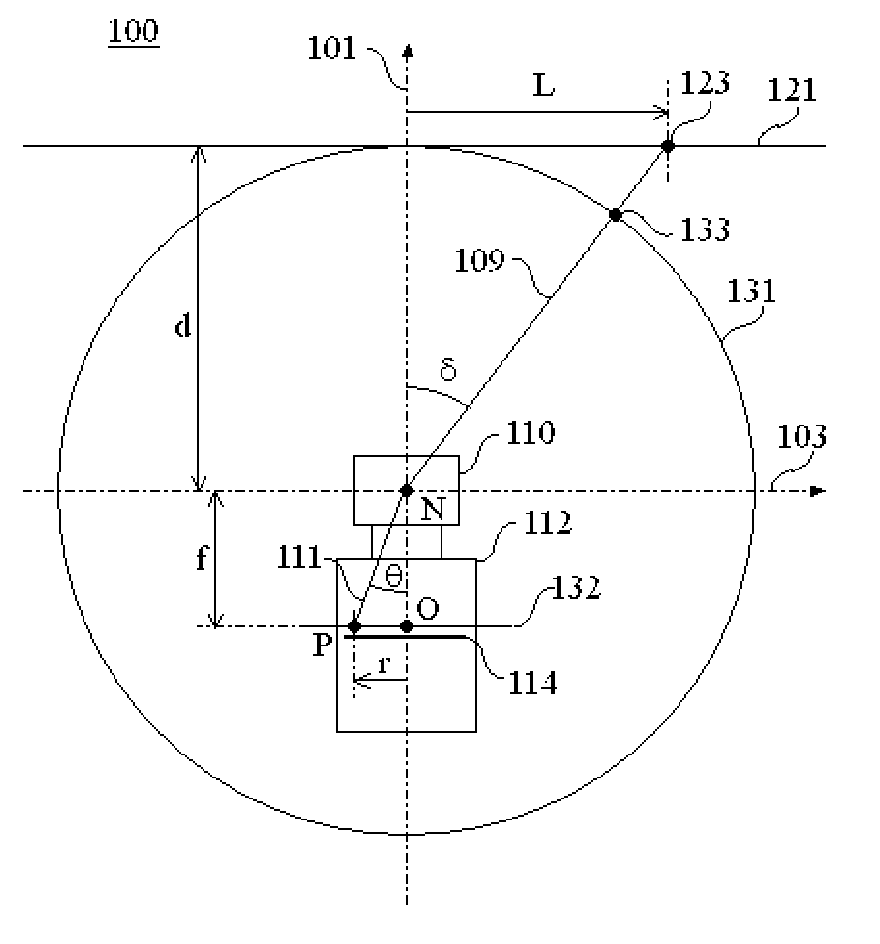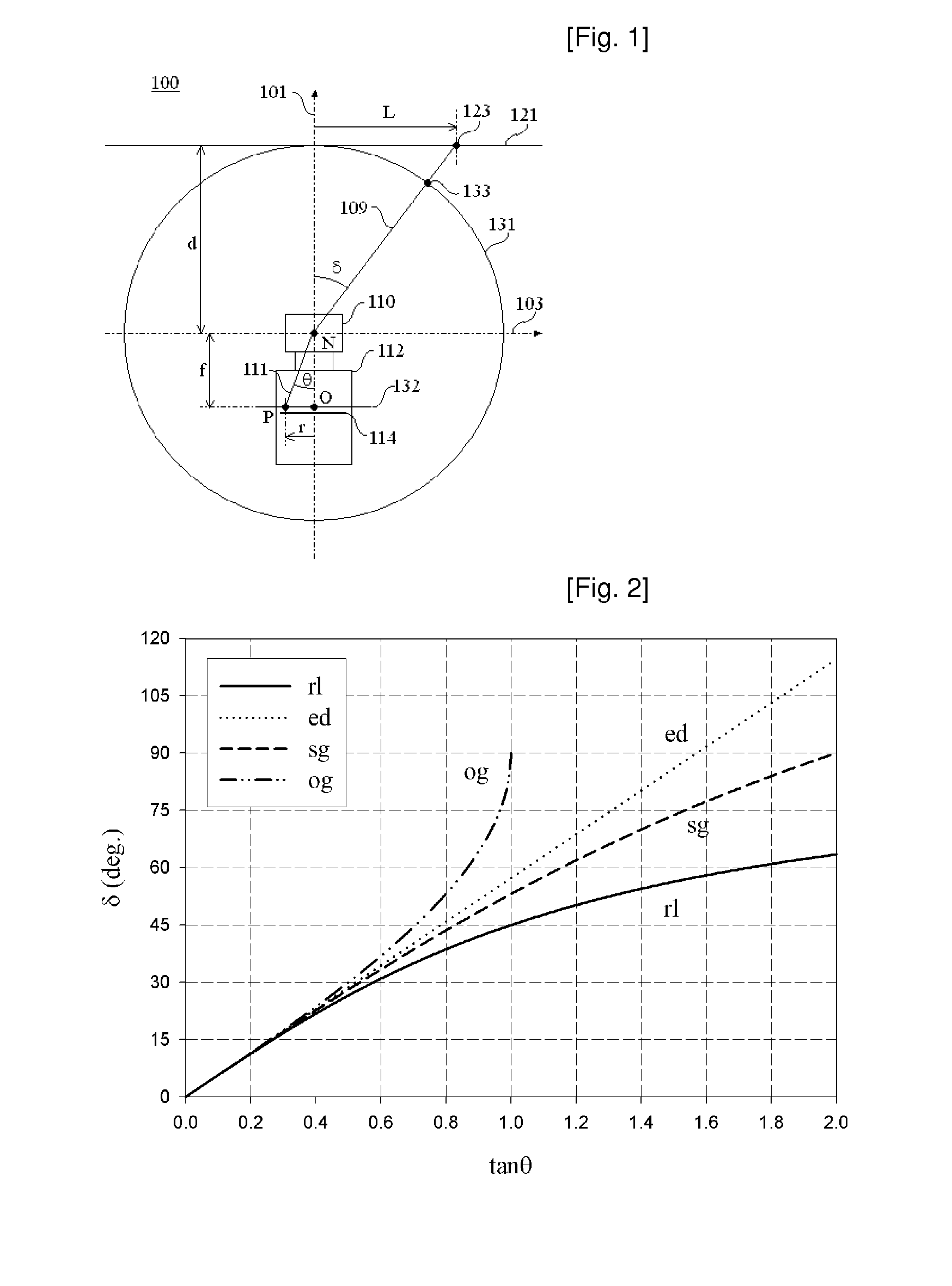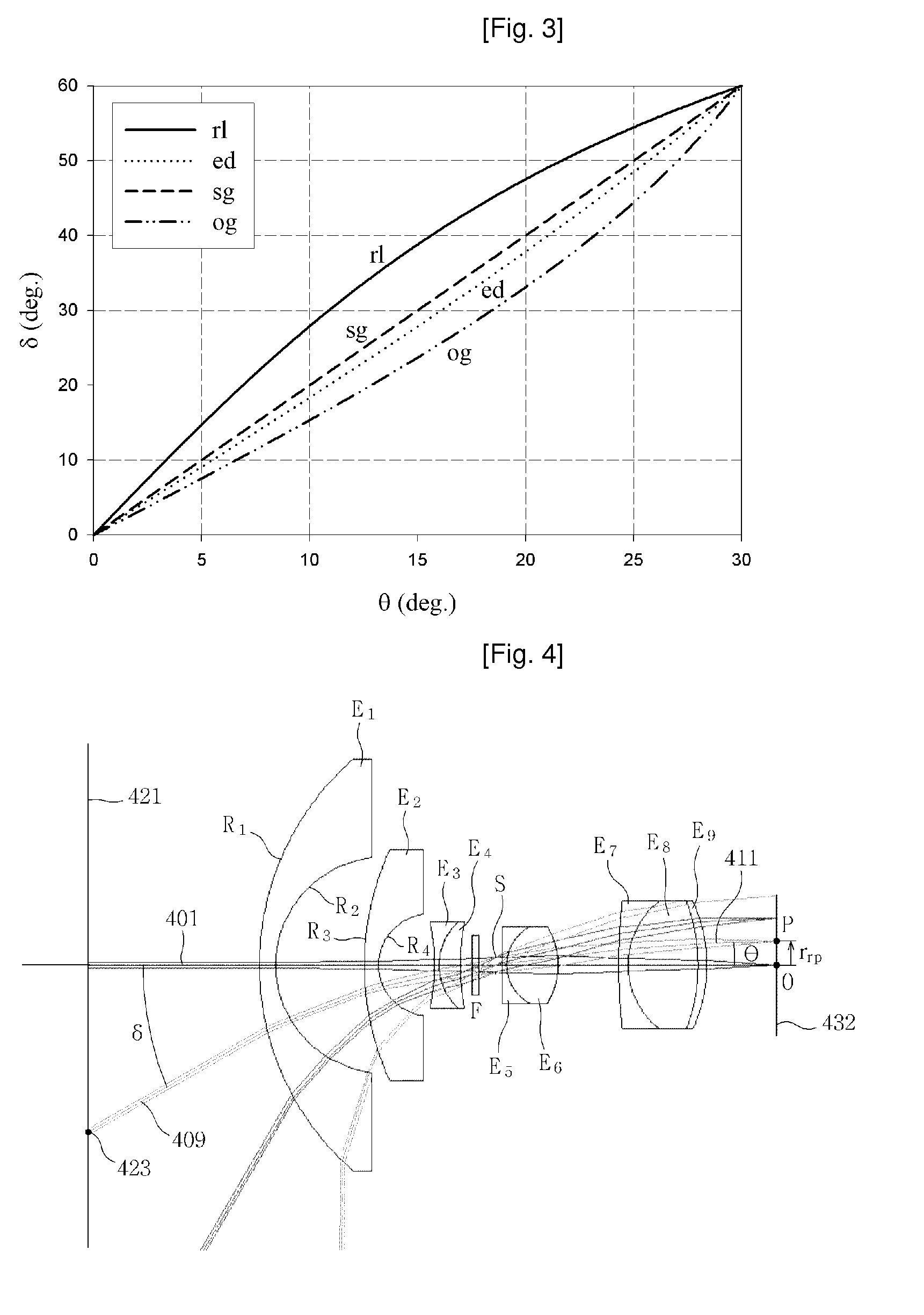Wide-angle lenses
- Summary
- Abstract
- Description
- Claims
- Application Information
AI Technical Summary
Benefits of technology
Problems solved by technology
Method used
Image
Examples
first embodiment
[0172]FIG. 30 shows the optical layout and the ray traces of a rotationally symmetric refractive rectilinear wide-angle lens according to the first embodiment of the present invention satisfying the rectilinear projection scheme given by Equation 36. This lens is designed to operate in the visible wavelength range, F number is 2.8, the field of view is 120° (i.e., δ2=60°), and optimized for a VGA-grade ⅓-inch CCD image sensor. A ⅓-inch CCD sensor has a width of 4.8 mm (i.e., W=4.8 mm), a height of 3.6 mm (i.e., H=3.6 mm), and a diagonal dimension of 6.0 mm. Accordingly, the maximum image height is r2=3.0 mm in order to prevent the vignetting effect.
[0173]This lens includes a first lens element E through an eleventh lens element E11 wherein the first lens element E1 is a double aspheric lens element, while the rest of the elements from the second element E1 to the eleventh lens element E11 are all spherical refractive lens elements. The stop S is located between the third lens elemen...
second embodiment
[0191]FIG. 40 is the optical layout and ray traces of a refractive rectilinear wide-angle lens with a CS mount according to the second embodiment of the present invention. Similar to the first embodiment, the field of view is 120°, and the F number is 4.4. This lens differs from the lens in the first embodiment in that the back focal length is longer than 12.5 mm. In this lens, the first lens element E1 is also a double aspheric lens element having a first lens surface R1 which is described by a polynomial and a second lens surface R2 which is described by an even aspheric lens formula. In addition, each of the second lens element E2 through the eleventh lens element E11 is a spherical lens element, and the stop S is located between the third lens element E3 and the fourth lens element E4. Table 4 summarizes the profile of the first lens surface R1, Table 5 summarizes the profile of the second lens surface R2 and Table 6 summarizes the lens design data for the entire lens except for...
third embodiment
[0193]FIG. 44 is the optical layout and the ray traces of a rectilinear wide-angle lens according to the third embodiment of the present invention. The field of view of this lens is 125° and the F number is 3.92. In this lens, the first lens element E1 is also a double aspheric lens element having a first lens surface R1 which is described by a polynomial and a second lens surface R2 which is described by an even aspheric lens formula, and all the other lens elements are spherical lens elements. A stop S is located between the fourth lens element E4 and the fifth lens element E5, and the optical low pass filter F is located between the twelfth lens element E12 and the image plane 4432. Table 7 summarizes the aspherical surface profile of the first lens surface R1 Table 8 summarizes the aspherical surface profile of the second lens surface R2 and Table 9 summarizes the entire lens design data except for the two aspherical surface profiles. All the spherical lens elements are selected...
PUM
 Login to View More
Login to View More Abstract
Description
Claims
Application Information
 Login to View More
Login to View More - R&D
- Intellectual Property
- Life Sciences
- Materials
- Tech Scout
- Unparalleled Data Quality
- Higher Quality Content
- 60% Fewer Hallucinations
Browse by: Latest US Patents, China's latest patents, Technical Efficacy Thesaurus, Application Domain, Technology Topic, Popular Technical Reports.
© 2025 PatSnap. All rights reserved.Legal|Privacy policy|Modern Slavery Act Transparency Statement|Sitemap|About US| Contact US: help@patsnap.com



